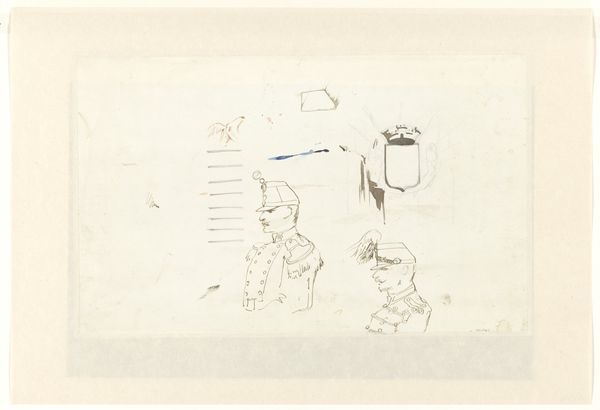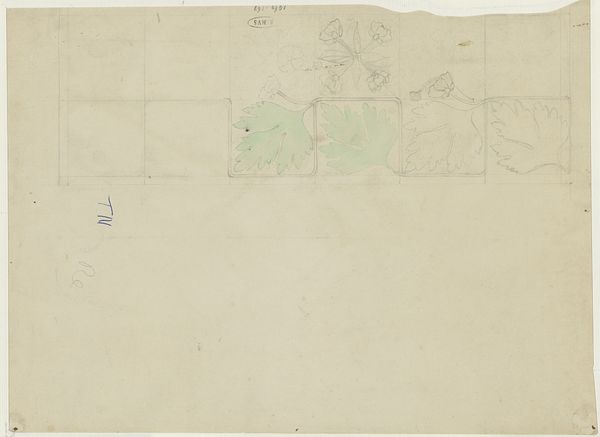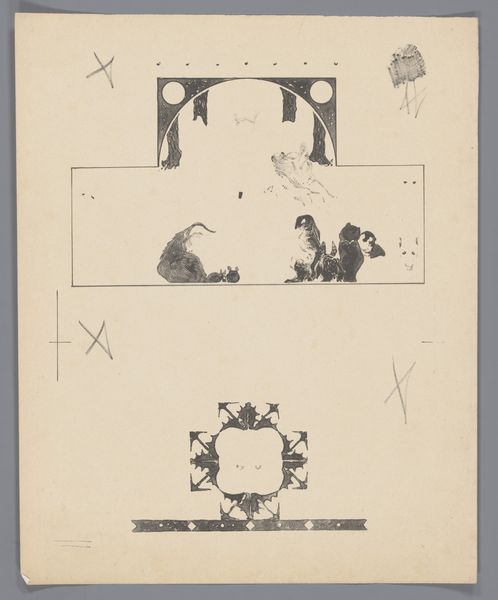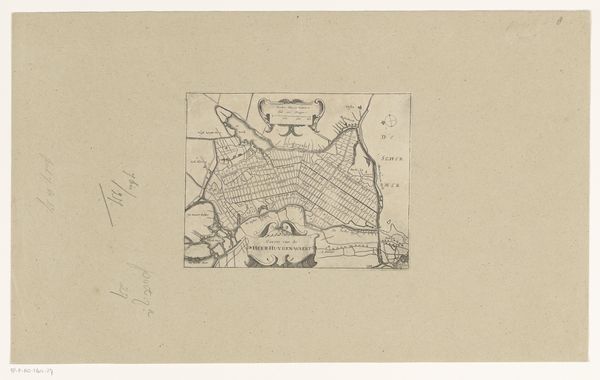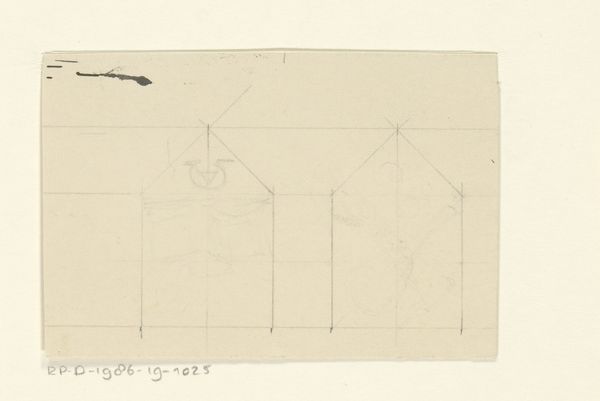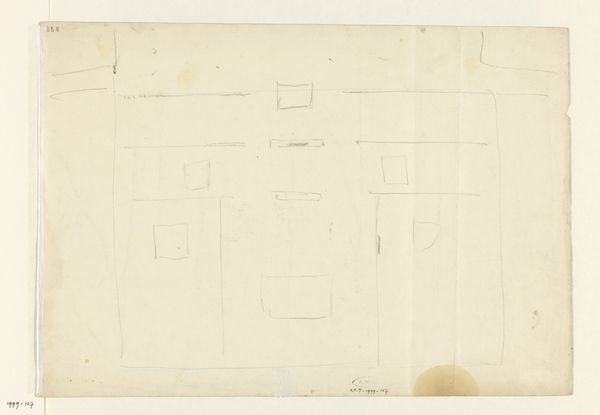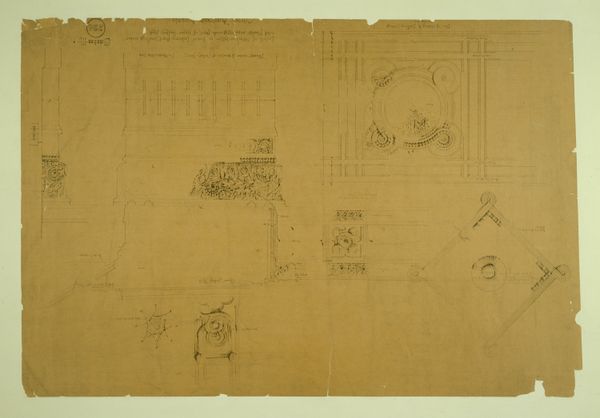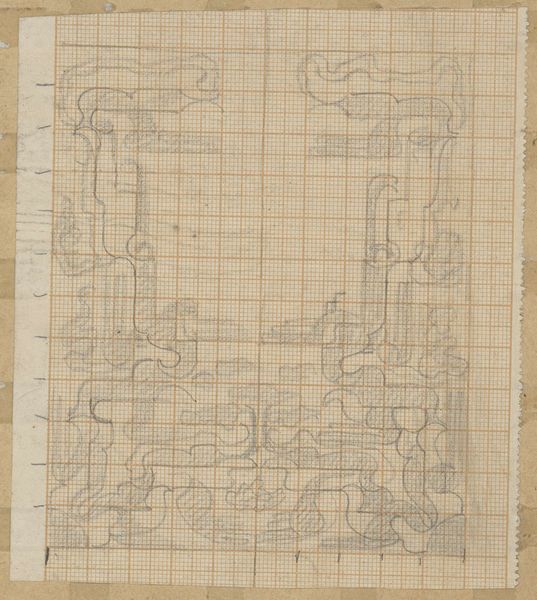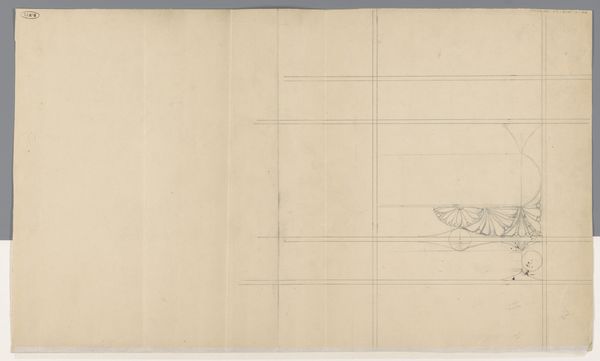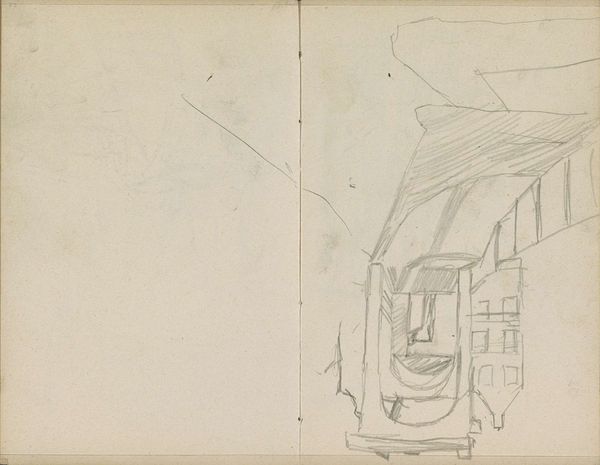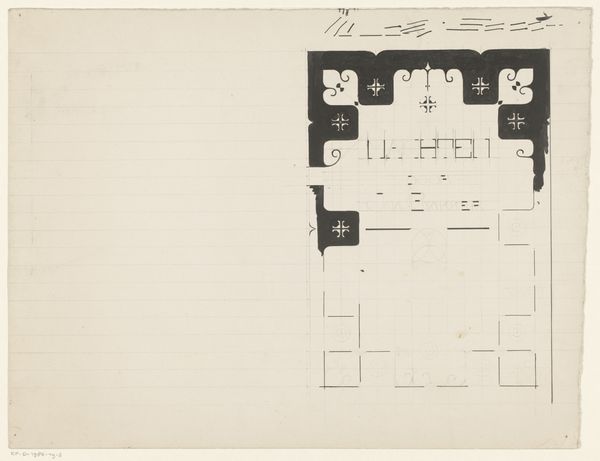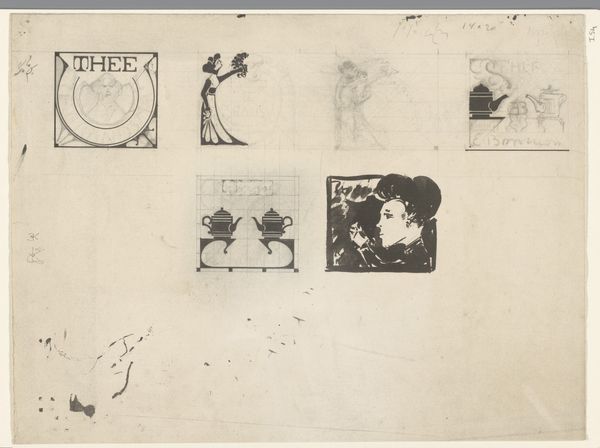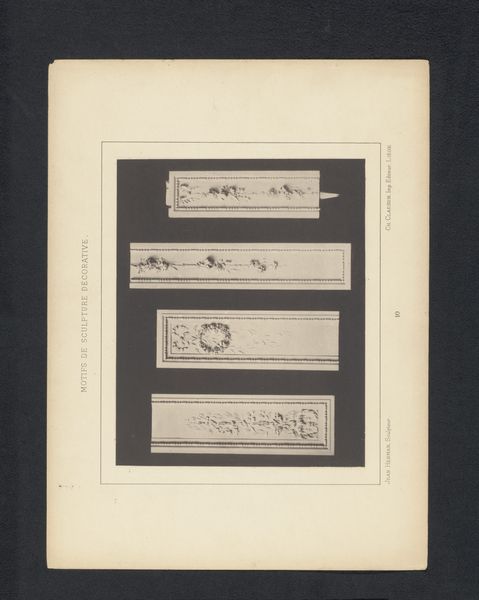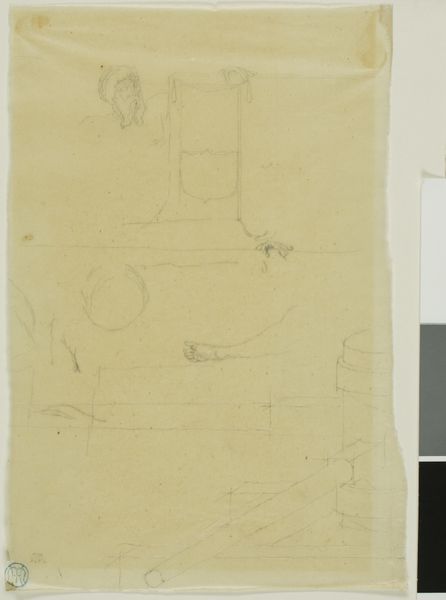
drawing, paper, typography, ink, pencil
#
portrait
#
drawing
#
art-nouveau
#
paper
#
typography
#
ink
#
pencil
Dimensions: height 213 mm, width 273 mm
Copyright: Rijks Museum: Open Domain
Editor: Here we have Reinier Willem Petrus de Vries' "Bandontwerp voor: Hoe? En wat?" from 1905. It looks like it's a design on paper using ink and pencil. The combination of precise geometric shapes with flowing Art Nouveau ornamentation is interesting, but I am struggling to read this image. What strikes you most about this work? Curator: What immediately captures my attention is the juxtaposition of the meticulous grid system against the free-flowing sketch of the figure. The tension created by these contrasting elements speaks volumes about the artist's process. Consider the deliberate placement of the typography within the grid; it reveals a desire for order, which is simultaneously subverted by the organic flourishes and handwritten annotations. How might this relate to Art Nouveau’s broader project? Editor: Are you saying that even though it is not a painting or sculpture, we should interpret this design as more than a technical draft? The balance between what is being controlled versus freed intrigues me. Curator: Precisely. Consider how the rigid structure of the grid provides a framework for the curvilinear forms, echoing Art Nouveau's embrace of both industrial production and organic aesthetics. The unfinished nature, the sense of process laid bare, is also critical. The image does not conceal, it reveals. Do you perceive any further compositional relationships? Editor: Now that you mention it, the grid is also fighting against the sketched figure and its attention to the human element. Both cannot coexist without friction. It seems the piece acknowledges conflicting visual interests. Curator: Precisely. By examining the intrinsic qualities of the work—its line, form, and spatial arrangement—we unlock layers of meaning. The drawing transcends its functional purpose to become a meditation on structure, ornament, and the very act of creation. Editor: Thank you, this perspective has given me so much to consider about what it means to analyze visual intentions behind the process!
Comments
No comments
Be the first to comment and join the conversation on the ultimate creative platform.
